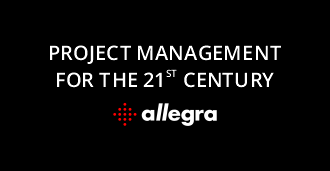The most crucial Project Management Methods
Overview
Project management is an incredibly important part of keeping a business organized and running smoothly. Projects can occur internally for many different purposes and all depends on the business or organization which is being run. There are also many external factors which can affect a project, and some project management styles are more easily able to adapt to them than others.
There are a few different methods and techniques that have been developed over the years and this blog is going to give more insight into seven of the more popular project management methods.
What is important to keep in mind is that ‘Project Management’ as a concept, can be defined as having final deliverables that are constrained to a finite timescale and budget.

Below are the types of Methodologies we will be discussing:
Waterfall Project Management
Waterfall project management is certainly one of the oldest methods known in businesses and is still commonly used by many development teams. This style involves working in waves or phases, whereby each step is heavily dependent on the step preceding it. It essentially follows a logic that requires one step to be completely finished before you can begin the next step. This process repeats itself until you reach the final stage whereby the project can be completed.
While waterfall style project management is much slower than its counterparts, because of its step-by-step approach, it can be useful for those looking to have a lot of structure or predictability in the workplace.
Unfortunately, it can also result in numerous problems and delays. Especially if bugs are detected during a later step in the development process and previous steps must be revisited to solve the problem.
Is this an efficient way to work? Some would suggest not, as the waterfall methodology can be very time consuming and cost inefficient. There has been a shift towards other kinds of Project Management, such as Agile Project Management which will be discussed below.
Agile Project Management
Agile Project Management is certainly a faster and more versatile solution to the outdated waterfall model discussed above. Agile is not a precise project management methodology, but rather a mindset or ethos that is applied to other versions of project management. It involves working in smaller chunks, or sprints, that allow projects to pivot when changes occur and is necessary. Should an unforeseen error or external factor disrupt project proceedings, this method allows swift movement and change in direction. Hence, agility in organisation project management.
Scrum Project Management
Scrum is the epitome of agile project management. It is fast, very narrow in scope and able to change direction at any given moment.
Scrum is all about using “sprints” to accomplish projects in small pieces, often based on a one-month, or two week sprint timetable. Scrum is great for relatively small teams that are looking to iterate and produce outcomes rapidly. Teams in Scrum Project management styled organisations meet regularly (usually daily) to discuss any roadblocks they’re experiencing in order to overcome them.
But like every framework, Scrum also has a few disadvantages. In some cases, to avoid the below mentioned disadvantages, scrum is combined with other project management techniques that can help resolve some of these drawbacks.
For example, Scrum often leads to scope creep (this refers to changes, continuous or uncontrolled growth in a project’s scope at any point after the project has begun ), due to the lack of a definite end-date. The chances of project failure are high if individuals aren’t very committed or cooperative throughout the process.
Adopting the Scrum framework in large teams is challenging due to the amount of co-ordination and communication required as the framework can be successful only with experienced team members. Lastly, daily meetings sometimes frustrate team members.
Kanban Project Management
Kanban is another form of agile project management. Unlike Scrum, which is focused on time-based pieces, Kanban is all about organisation. To accomplish this successfully, Kanban looks predominantly at the number of tasks that go into any process and how they can be streamlined, reduced, organised and so on. This is an especially great model for those with a factory-like product that doesn’t require much variation. It promotes absolute efficacy and also tries to ensure that jobs that are independent of each other occur simultaneously.
Some of the major advantages that are clear within Kanban includes; an increase in process flexibility, increased focus on continuous delivery, reduction in the wastes from the overall process, improvement of delivery flow, and reduction in the time cycle of the process.
Some of the disadvantages of Kanban include an outdated Kanban board that can lead to issues in the development of a company. It can make the board overcomplicated and lack of timing structure is another disadvantage. This is due to lack of timeframes associated with each phase.
Lean Project Management
Lean Project Management is similar to Kanban in that it’s all about process. However, it has an even higher emphasis on trimming the ‘fat’ ie. everything that is unnecessary about the process overall. ‘Lean’ is all about focusing on a ‘customer-first’ mindset and how processes can be stripped away to deliver the best, most affordable, timely experience for their customers.
The book Lean Thinking by James P. Womack and Daniel T. Jones, which was first published in 1996, introduced five key principles that can be used to apply the lean concept to project management.
1. Specify value: In essence, “What is the project’s value in the mind of the customer?”. This will ultimately help one decide the value which is appropriate to actually deliver in the processes. Will also help a company decide what should be considered as essential and what is more of a “fat” element to the project.
2. Map the value stream: A “value stream” map shows the entire process for creating the product or project. When this process has been mapped, it can be analysed for any waste, such as unnecessary steps that unnecessarily deplete resources or compromise overall quality of a project.
3. Make value flow by eliminating waste: Creating an improved plan based off the value stream will eliminate the waste. This plan represents a “future state” for the project’s process.
4. Make value flow at the customer’s demand: The ideal scenario for any organisation is to move the project forward or create the product when requested by the customer. To get as close to this point as possible to reduce inventory and save resources is key.
5. Embrace continuous improvement in pursuit of perfection: One must regularly reassess the project process in order to eliminate waste and maximise productivity and efficiency for the organisation as a whole.
Six Sigma Project Management
The Six Sigma method focuses on improving the delivered quality of a project’s output. This is especially helpful if you’ve undergone a lean management style and found the end result less than satisfactory (due to over cutting ‘unessecary’ steps). As Six Sigma emphasises creating a better end result for the customer at the end, this method can be included into other management styles and is a great way to refine a project.
In addition to this operational focus, here’s a few more considerations for when to use and apply Six Sigma:
• To reduce defects or variations in your product or service.
• To define what’s causing problems.
• To use available data more effectively to increase efficiency and productivity.
• To increase customer and employee satisfaction.
• To design a new process or redesign an existing ineffective one.
PRINCE2 Project Management
The PRINCE2 method is often used by private sectors in the government, and is focused on efficiency and minimising risks and errors. This detail-focused method is all about bulking projects up into product-based steps that can be tackled one at a time, ensuring no stone is unturned anywhere in the process.
Furthermore, PRINCE2 is a process-based approach that focuses on organization and control over the entire project, from start to finish. That means projects are thoroughly planned before kick-off, each stage of the process is clearly structured, and any loose ends are neatly tied up after the project concludes.
You may be wondering: What’s the reason for the “2”? The PRINCE methodology was initially developed in the late 1980s as a way for the United Kingdom government to manage various IT projects. In 1996, the approach was reviewed and updated by a team of project management specialists and a review panel of 150 public and private organizations to make it more widely applicable to a variety of industries. Thus, the new and improved PRINCE2 was born.
Summary

What is clear is that Project Management can take various forms for various different core purposes. There are many ways to focus on time management, and many ways to focus on organisation. All in all, it is very important to understand the business in which you are conducting a project and to have a clear sight of what you wish to achieve. Project management is most definitely very effective when you’re able to pivot to an ever changing environment.
If you enjoyed this blog, you may enjoy reading a few of our other blogs such as 7 Project Management methods you should know.




